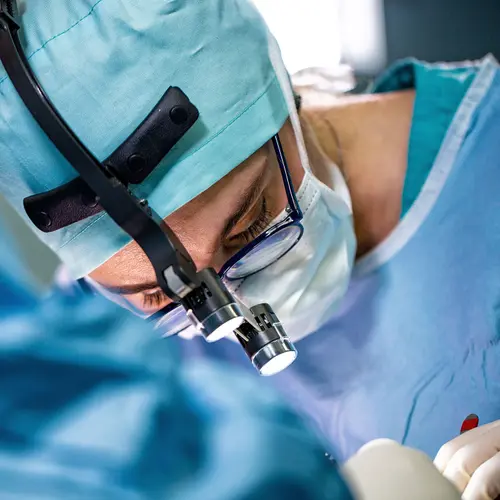Ankylosing spondylitis usually hits young people in the prime of life, when they’re full of hope, possibility, and plans. Coming to grips with this painful, debilitating form of arthritis while at the same time trying to find your place in life can be daunting.
Yet many people with AS have found ways to make peace with their new normal.
‘I was terrified’
When Ivan Schmidt was a child, he had movement problems that were so bad, he had to use crutches and take OTC pain relievers to get through the day. He had even started practicing meditation to try to be at ease with it.
At 21, while studying for a nursing exam, Ivan recognized the symptoms that had plagued him for so long. After seeing a rheumatologist, he discovered that he had AS.
Almost immediately, he became concerned about his career choice.
“I was terrified when I got hired to work as an ER nurse,” Ivan says. “I was afraid a flare-up would render me unable to work. I had to pull out all the stops and really commit to getting healthy by any means necessary, or my nightmares of being disabled in my 20s would probably come true.”
He started going to a pain psychologist -- a doctor who teaches techniques to manage with pain without medication. Ivan also tried acceptance and commitment therapy (ACT), which helps people embrace their thoughts and feelings instead of fighting or avoiding them.
“Although I only went to a few sessions, it helped me get over a decade of mental anguish and depression,” Ivan says. “I choose to accept and be grateful for the opportunity to rise above and still be satisfied in life."
He also remembers the lessons he learned reading Viktor Frankl’s book, Man’s Search for Meaning. In the book, Frankl discusses his time as a prisoner in Nazi concentration camps, where the author found meaning through enduring such a difficult time with dignity.
“With this mind-set, who among us are stronger and more dignified than those with chronic pain,” he says.
Ivan’s been in remission for 14 months. Diet, medication, and exercise (he does yoga, lifts weights, and aims to get at least 75 minutes of cardio each week) have also played a big role.
“I’m so grateful for the opportunity to be productive and to feel successful [as a nurse],” he says. “I am also very grateful to AS in the sense that it forced me to prioritize my mental and physical health at such a young age.
“I still have pain and stiffness,” Ivan says. “But I’m thrilled at the quality of life I enjoy without the devastating flare-ups that plagued me for 10 years.”
He’s feeling so good, in fact, that he’s getting ready to check a big item off of his bucket list.
“I plan to take a year or two off nursing soon and pursue my dream of bicycling across continents,” Ivan says.
‘I thought it was all my fault’
In 2013, Tristan Brown was a standout graduate student in chemistry. But that spring, he started to feel deep fatigue he couldn’t explain. He had trouble getting up in the morning and began to fall behind in school.
“I thought I wasn’t being disciplined enough,” he says. “I thought it was all my fault.”
Tristan learned that he had a form of AS called non-radiographic axial spondyloarthritis (nr-AxSpA). Both Nr-AxSpA and AS cause inflammation in your spine. In advanced cases, some of the spine’s bones (vertebrae) may fuse together. Other joints and body parts can be involved, too, including the eyes.
“The thing is, when the inflammation gets bad, my brain slows down, too,” he says.
“I was studying chemistry and couldn’t do the lab work,” he explains. “I had to stand too much and it was hard to handle all the glassware.”
Eventually, he made the tough decision to drop out of school.
“I was an ambitious guy, trying to have a career in chemistry that I was passionate about,” he says. “It was tough losing all of that,” he says.
Tristan decided to open another door. Though not an athlete, exercise became central to his life. He started stretching his hips and back and weight lifting with medium-heavy weights. The real star of his routine was a device called a vibration plate. It forces muscles to contract dozens of times a second. It’s supposed to improve strength and flexibility as well as ease pain. Tristan uses it for 10 minutes every morning.
"The vibrations really help loosen things up. I can be struggling with my joints, and then there is a rapid improvement,” he says.
Once his movement improved, it was time to find a career path that better fit his new normal. Tristan taught himself how to program, and now, he’s a computer programmer in Texas.
Tristan also now works for someone who understands his condition and the challenges it brings.
“I still struggle in my career because I can't work the normal 9 to 5,” he says. “Mornings are the most difficult. But I'm lucky because my boss is accommodating."
"It's really hard when you don't have the life you wanted,” he says. “I used to be an overachiever, a type-A personality. I need to accept that I’m not as quick anymore and that I don’t have to do extreme things to be happy.
“I can enjoy an evening at home or a walk in the park. It was pretty difficult to get there, but my perspective has definitely shifted.”

